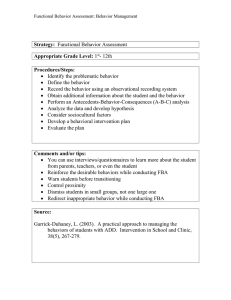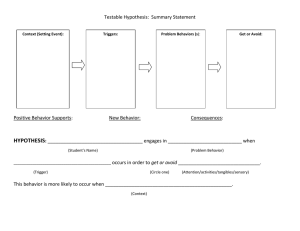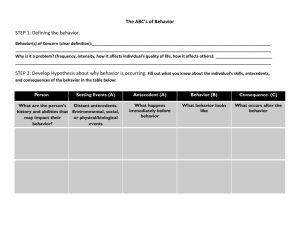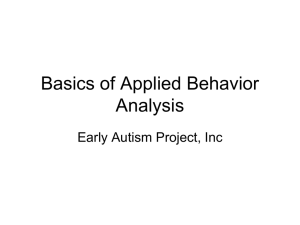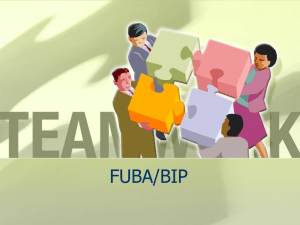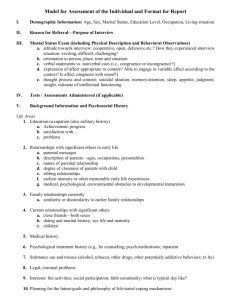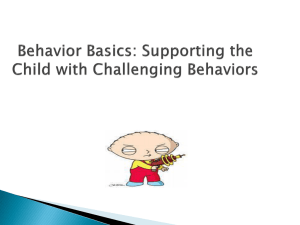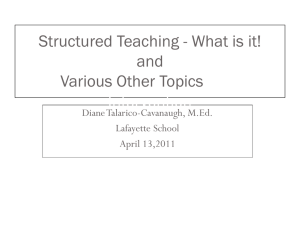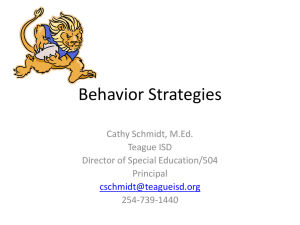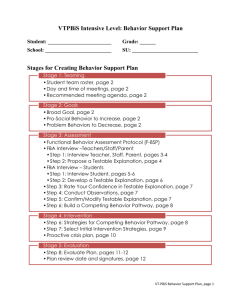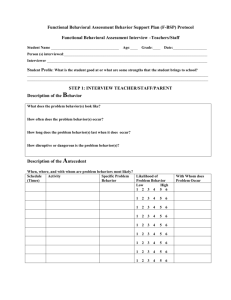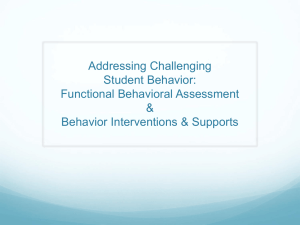FACTS: Simple FBA - Functional Behavior Assessment Guide
advertisement
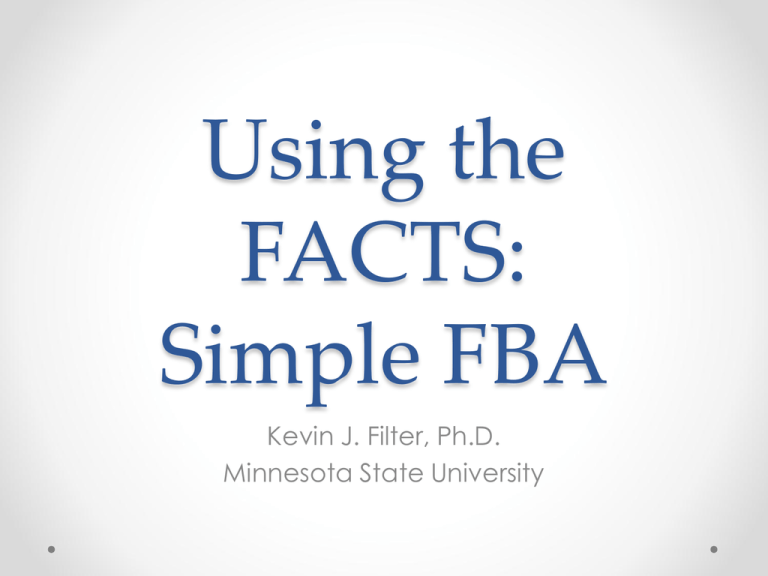
Using the FACTS: Simple FBA Kevin J. Filter, Ph.D. Minnesota State University When Assessing Behavior, Think A-B-C Our goal is to fill in the A-B-C blanks Antecedent/ Setting Event Behavior A B Consequence C What is the FACTS? • Functional Assessment Checklist for Teachers and Staff • Interview designed to efficiently gather accurate information about the function of behavior • Provides step-by-step process for identifying antecedents, behaviors, and consequences When to use the FACTS FACTS: Team Process? • FBAs are ideally completed by a team o Behavior expertise (School psych) o Primary teacher • Rotating position o SPED Teacher o Others • The simple FBA process that relies on the FACTS could be done by a behavioral expert without a team… but teams are better for long-term outcomes What you get from a FACTS • • • • • • • Student strengths Problem behaviors Routines in which problem behaviors occur Triggers or predictors of the problem behavior Pay-off (function) the behaviors have for the student Possible setting events Summary of behavior Interview Logistics • Interview multiple informants o o o o o Primary teacher Other teachers Student Para Parent • Best respondents are those who o Have seen the behavior occur many times o Have a basic understanding of behavior theory Borgmeier (2003) • Conduct interviews BEFORE observations After the FACTS • Observe the student in the identified routines to confirm or refine the hypothesis from the FACTS • Direct observation needs to be formalized and include detailed information about antecedents, behaviors, and consequences Direct Observation Logistics • The information from your interviews should tell you what to observe and when • If you observe at the wrong time, you won’t see many behaviors • You should observe at least 10 incidents of behavior before making conclusions • Plan for “reactivity” Direct Observation Observations can by highly systematic: • Functional Behavioral Assessment – Observation and Summary Form (FBA-OSF) o Filter and Alvarez (2012), modified from O’Neill et al. (1997) Or observations can be simple: • Informal A-B-C Observation Informal A-B-C Observation Form Student: __________________Observer: _____________________ Incident # 1 2 3 4 5 6 7 8 9 10 11 12 13 14 15 16 17 18 19 20 Date & Time Antecedent What happened before the behavior? Behavior What did the student do? Consequence What did student get out of the behavior? Combine Data • Consider consistency across data • If inconsistent, then focus on direct data first, FACTS interview second, and then other data Outcome: Precision Hypothesis Statement Antecedent/ Setting Event Behavior A B Consequence C (Fill in problem behavior) is most likely when (Fill in antecedent) occurs and is maintained by (Fill in reinforcer). This whole sequence is most likely when (Fill in setting event) occurs. FUTURE STEPS • Develop behavior interventions to match results from FACTS and Observations • These interventions will generally be MORE effective than interventions not based on FACTS information Team Discussion Questions ❑ Who on your team could complete the FACTS? ❑ Turn to the FACTS in your manual and take a few moments to look it over and talk about when you would use the FACTS in your Tier 2/3 Process. Appendix HP. 73 Link To More information ✿ http://www.pbis.org/common/pbisresourc es/publications/PracticalFBA_TrainingMa nual.pdf ✿ http://www.pbis.org/common/pbisresourc es/publications/TrainerManual.pdf
